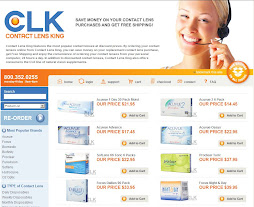Daily disposable contact lenses were first approved for use in the United States in 1994. Yet, sixteen years later, only 10 to 15 per cent of American contacts wearers use them regularly. This is a surprising statistic*, especially in the face of their convenience and availability.
Daily disposables are contacts that are worn once, removed before bedtime, and replaced with a fresh pair the next day. While Americans have been slow to fully embrace daily disposables, other countries have not. For example, Scandinavian countries and Japan are seeing use of these contact lenses at 50 per cent and above. They are also the leading modality of lens wear in Europe and the rest of Asia.
Why is the market share so low in the US? Cost is a factor that weighs against using daily disposables, especially if you rely solely on your eye doctor to get them. However, if you have a valid prescription and go online to source them, you will discover these lenses can be quite affordable--especially as they are available in boxes of 30 and 90 and may be purchased in yearly supplies. Depending on where you shop, discounts and rebates allow you in some instances to have daily disposables for around $1 a day. Since you do not have to buy solutions or lens cases, those expenses are eliminated from the cost calculation for daily disposables. As manufacturers continue to improve on their production efficiencies, product costs for disposables will continue to trend towards a more economical option for consumers.
Daily disposable contact lens wear provides the consumer with a safer option for their ocular health. The day-to-day build-up of protein, lipids, and other substances that occur with other types of contact lenses (even 2-week and 30-day disposables) increases the risk of infection. The replacement frequency inherent with daily disposables reduces this risk. The once-a-day use also provides comfort for those plagued by allergy season, as deposits that trigger those symptoms have less chance to accumulate on the lenses. In addition to the standard correction for near- and farsightedness, there are now daily disposable torics for astigmatism, multifocals for presbyopia, and UV blocking lenses that protect the cornea.
When daily disposables were first approved for use, only one manufacturer (Johnson & Johnson/Vistakon) made them. Today, all the major contact lens companies offer lenses in this modality, including Bausch & Lomb, CIBA Vision, and CooperVision.
Ask your eye doctor whether you are a candidate for daily disposable contact lenses. The rest of the world has already discovered their convenience and comfort, why not you?
*According to Dr. Renee Reeder, OD, Associate Professor and Chief of the Cornea Center for Clinical Excellence at the Illinois College of Optometry in Chicago.
Subscribe to:
Post Comments (Atom)





No comments:
Post a Comment